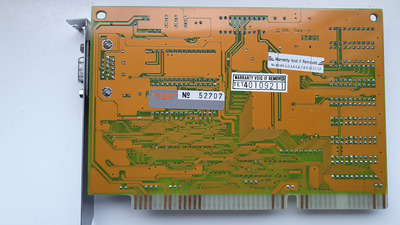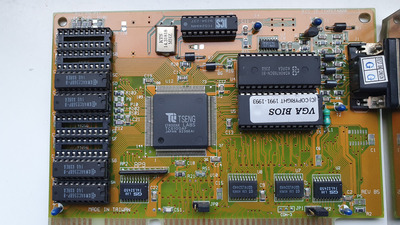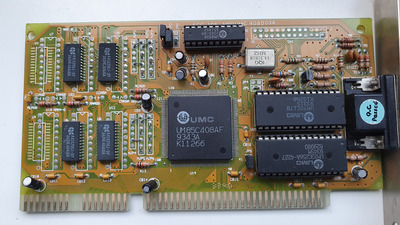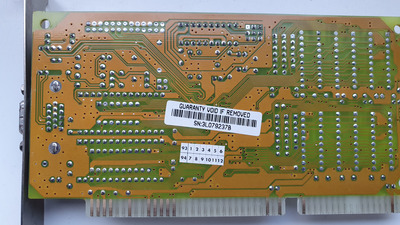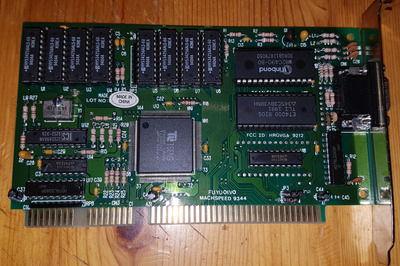First post, by egbertjan
I have the following 2 graphic cards a tseng et4000 ax and a UMC UM85C408AF (see the pictures below) for my 486 pc with msdos 6.22 / Windows3.11. Now I have the following problem with my graphic cards when I install the driver in windows 3.11 , I get artifacts with both graphic cards. Could this be because the jumpers are wrong on the cards? I read somewhere that the jumpers may be for setting 16 or 8 bit isa locks. Who can tell me if the jumpers are for that or maybe they are for something else and how to set them.
Does anyone know which of these 2 cards is the fastest and which one I can put the best in my PC?
I would also like to know if the tseng et4000 ax is a 512kb or a 1mb card. How can I find out?
This is there in my pc
FIC 4386-VIO
Creative AWE 32 ct3900
486dx266
16mbram
